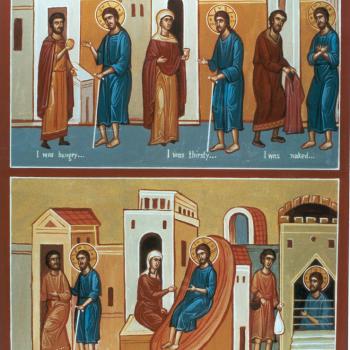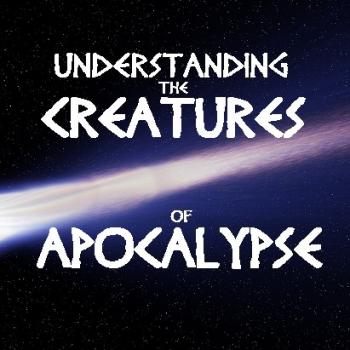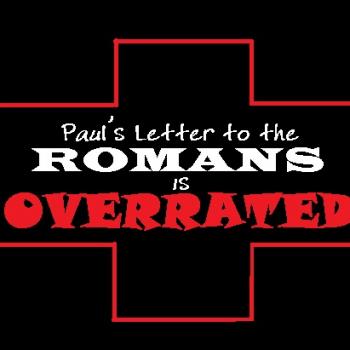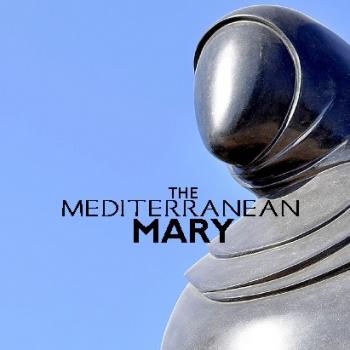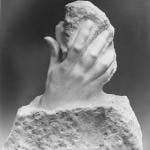
Marriage in the Bible, as between Mary and Joseph in the Christmas stories of “Matthew” and “Luke,” is quite a different union than 21st century Americans expect.
Marriage and the Gospel Christmas stories—let’s talk about the Holy Family! Last time, we shared that there are many good reasons not to treat the Gospel Infancy Narratives of Matthew 1—2 and Luke 1—2 as modern fact-precise biographies. Throughout December we have explored why we shouldn’t attempt harmonizing “Matthew” with “Luke.” We have seen that these accounts were written to establish Jesus’ honor-rating, despite his lowly, shameful origins. While we can acknowledge that these accounts are all true and even in some ways historical, we must admit that they are not completely historical. Now we move forward looking at that special marriage bond of Mary and Joseph.
When 21st century Western Christians read the Gospels, assumptions abound. How do you picture the Holy Family? We ought to realize that being Middle Eastern, Joseph, Mary, Jesus—and all the others whether named or left unnamed—were nothing at all like the “family” Americans know. One should wonder where all this fuss we make over “Biblical family” and “Biblical marriage” and “parenting in a biblical way” comes from! Most of it is our culture superimposed on our ancient, sacred Mediterranean library—used like a Rorschach ink blot test, conveniently revealing what we expect to see. The reality is shockingly different!
Marriage & Family, in the Bible
Following the lead of Dr. John Pilch and his fellow Context Group scholars, if you bring your American ideas of “family” into the Bible and either Infancy Narrative, your reading will be a distortion. Every time you read about family in Scripture meanwhile imagining “Mother, Father, Dick, Jane, Spot, and Fluffy,” you are doing violence to the Sacred Page. Nowhere in the Bible is such a family. Your reading drags into it an alien scenario, a false image and ethnocentric identity theft. You necessarily obscure and muffle what the inspired author is saying. Communication is impossible with your disrespectful reading.
Inspiration happens “in.” The human authors of Scripture, ancient Mediterraneans, never dreamed that they would have to explain to any reader “family” and what it meant. “Matthew” and “Luke” never spelled out how “family” happened or felt that such explanation was needed. They never explained the demands of ancient family relationships. Consequently, we can say that “Matthew” and “Luke”—together with all the Scriptures—are high context documents. Should a reader from a low context society (e.g., United States) not carefully and respectfully read the Infancy Narratives maintaining awareness of appropriate cultural scenarios while reading, he or she will be lost in a blizzard of Christmas confusion of spurious familiarity.
Marriage and the Matthean Origin of Jesus
We are going to focus on the Matthean Infancy Narrative, this being Year A in the Cycle of Lectionary Readings. Let’s dive into Matthew 1:18-25—
Matthew 1:18-25—
Now this is how the birth of Jesus Christ came about. When his mother Mary was betrothed to Joseph, but before they lived together, she was found with child through a holy spirit. Joseph her husband, since he was a righteous man, yet unwilling to expose her to shame, decided to divorce her quietly. Such was his intention when, look!—the angel of the Lord appeared to him in a dream and said, “Joseph, son of David, do not be afraid to take Mary your wife into your home. For it is through a holy spirit that this child has been conceived in her. She will bear a son and you are to name him Jesus, because he will save his people from their sins.”
All this took place to fulfill what the Lord had said through the prophet: “Behold, the girl of marriageable age shall be with child and bear a son, and they shall name him Emmanuel,” which means “God is with us.”
When Joseph awoke, he did as the angel of the Lord had commanded him and took his wife into his home. He had no relations with her until she bore a son, and he named him Jesus.
Strange for a Topic Sentence!
Look carefully at the opening words in the periscope above. John Pilch found this sentence quite confusing if it was treated as a topic sentence (Matthew 1:18). This was because we don’t deal with the birth of Jesus (i.e., the topic) until all the way down in verse 25!
But Pilch did accept verse 18 as a topic sentence. The problem he had was how some modern English translations rendered it—“Now the birth of Jesus Christ took place this way…” Pilch said no way!—that can’t possibly be the right translation because it is not the topic! This is a bad English translation, ladies and gentlemen.
NABRE Matthew 1:18 reads:
Now this is how the birth of Jesus Christ came about. (Τοῦ δὲ Ἰησοῦ Χριστοῦ ἡ γένεσις οὕτως ἦν.)
But look at verse 25. That’s where we finally read about the birth of Jesus.
He had no relations with her until she bore a son, and he named him Jesus.
καὶ οὐκ ἐγίνωσκεν αὐτὴν ἕως οὗ ἔτεκεν υἱόν· καὶ ἐκάλεσεν τὸ ὄνομα αὐτοῦ Ἰησοῦν.”
Every Translation is a Betrayal
Pilch humorously, and prudently, reminded us of the wonderful Italian proverb—“Traduttore, Tradittore”—which means that “Every translator is a traitor.” So do not trust your New American Bible, Revised Edition. Do not trust your Ignatius Revised Standard Version, or New Revised Standard Version, or your Douay–Rheims, or your 1611 “Authorized” King James. The NABRE and the NRSV are in many ways superb. But that makes little difference. Pilch would invite us to use them and read them and pray with them, certainly. But he would also caution us: never trust them.
A Better Translation of Matthew 1:18
The Greek word in Matthew 1:18, genesis (γένεσις) points us to how, in English, the topic sentence should be better translated. One adequate way would be—
“These are the circumstances surrounding or connected with the conception of Jesus.”
Perhaps an even better rendering would be—
“The origins of Jesus, messiah, are thus…”
Does your favorite English translation of “Matthew” have “Jesus, messiah” in Matthew 1:18? Not likely. Probably, what you see there is “Jesus Christ,” yes? See how Christ is with an uppercase “C”? That’s wrong. It makes the title Christ seem like it’s a surname. But Jesus CHRIST is not a name such as Jeffrey HUNTER, Ted NEELEY, Robert POWELL, Willem DAFOE, and Jim CAVIEZEL.
Christ happens to be a title. It is an ancient Israelite political religious title. It doesn’t name Jesus—rather, it explains a function that he plays. Pilch and friends are right to advise us that every time we encounter it inside our English Bibles, we ought to scratch it out. And what should we right there instead? Messiah. We will see why in an upcoming post.
Betrothed VS Engaged
Were Mary and Joseph engaged or betrothed? Look here:
Matthew 1:18b
When his mother Mary was μνηστευθείσης to Joseph, but before they lived together, she was found with child through a holy spirit.
What in the world does μνηστευθείσης mean? The NRSV renders it as “engaged,” and therefore tells me that Mary and Joseph were engaged. But that’s nonsense. There is no “engagement” in the Bible. In the engagement process we Westerners know and love, two self-selecting partners agree to consider marriage at some proximate future time. This was unknown in first century Israel. Bad choice, NRSV translators! Betrothed is the correct translation. Engagement and betrothal, despite loose English usage, mean very different things. This isn’t semantics.
Biblical “marriage”—neither a religious nor civil institution—is not about self-selecting individualistic partners falling into romantic love and marrying. It isn’t about two persons prayerfully discerning if God wants them to be together in this way. It is instead the pooling and fusing together of the honor of two families. The male and female merely represent these two families. Village mothers arrange the marriage. Village fathers ratify the marriage. Consequently, parents were viewed as acting in God’s name—see Matthew 19:6.
God’s Will = Parent’s Arrangement
When the Matthean Jesus later mentions God joining together a man and woman in ancient Israelite marriage, we might ask: how? How and when does God join this Israelite pair together? Answer: when the parents choose (i.e., when the two sets of parents arrange their marriage).
Biblical marriage is arranged marriage, folks. This is repugnant to most American Christians, enculturated and socialized to belong to the most individualistic culture of all time. We celebrate personal choice! Not so the Gospels, my friends. Do children choose their parents? Never—God does that. In the same way, Biblical children never choose their spouses.
God selects your parents, our biblical ancestors thought. In the same way, through their parents, God selected their marriage partners. The will of God—seen like all predestinarian matters in Scripture, after-the-fact—equals the Israelite mother and father choosing. That’s the Bible, folks. Want a “biblical marriage?” Well… take that, theology of vocations.
Joseph and Mary: Patrilateral First Cousins
So, given that Joseph and Mary were ancient Middle Eastern people of traditional village life, what can we infer as to their exact relations? They were almost undoubtedly first cousins, and probably patrilateral first cousins. How can we arrive at that reasonable conclusion which certainly sounds strange to our sensibilities?
Biblically speaking, a person’s ideal marriage partner is his or her patrilateral cousin. Pilch and friends explain that in “Biblical marriage,” a son would be arranged by the village mothers and fathers to marry his father’s brother’s daughter (see Genesis 24:4, 15, 24, 47). However, Pilch says, the village mothers could rearrange the choices (see Genesis 29:21-27).
So it is reasonable to believe that Mary was Joseph’s patrilateral first cousin. This is a culturally plausible scenario. The idea that they were not blood relatives, met one day, fell in love, dated, and then Joseph asked Mary for her hand in marriage and they became engaged is culturally inappropriate.
Divorce = Blood Feud!
Keep in mind that the bride and groom in ancient Mediterranean marriages were not seen as individuals. Instead, they were understood to be representatives of the families. Why does Middle Eastern Jesus’ prohibit “divorce” (Matthew 19:6)? Should ancient Israelite village spouses split, this would initiate a rupture in the village. Middle Eastern culture is agonistic. Soon feuding would begin, turning quick to blood feud. This spells extinction for dirt-poor hamlets like Nazareth. “So lump it,” Middle Eastern Jesus says—blood feud must be avoided.
That’s right folks. Jesus is not condemning 21st century Western Christians getting divorced. Divorce was unacceptable in his context because blood feud breaking out in the Jesus Movement (and later first century Jesus groups) was unacceptable. “Divorce” in that context meant fifty to 100 people in a household being shamed, to any Mediterranean, a fate worse than death. The bride’s male relatives must avenge the family honor, no matter how gruesome or violent the means.
Jesus’ solution? No divorce. That’s good culturally-specific wisdom. What about our context? Well let’s give that a lot of pastoral thought…
First Cousin Marriage & Birth Defects
Some Western people reading this may ask, “First cousin marriage is the Biblical norm? But how can that be? With everyone doing that, wouldn’t most children of those times have mental problems and other genetic defects?”
When asked questions like these, John Pilch responded by citing a study from the American Association for the Advancement of Science. According to their global cross-cultural studies, infant mortality rates of children whose parents are first cousins do tend to be higher, but only twenty-one percent compared to sixteen percent. Given the small rise, the traditional Middle Eastern conclusion was that modest biological hazards were outweighed by the tremendous benefits of maintaining family honor.
Patrilocal and Patriarchal
Betrothal begins ancient Mediterranean marriage. Eventually, when the betrothed girl enters womanhood—usually around her menarche—her betrothed takes her into his father’s house. This act, together with the presentation of the bloody sheet in front of the assembled village in a weeklong celebration, enacts “Biblical marriage.” All Biblical people, collectivists, live embedded in some male, the Patriarch. Biblical marriage is patrilocal. All sons, whether single or married, always will live with father in the patriarchal compound (perhaps even taking up an entire village). After death, all are buried together.
Next time we will explore why the Matthean Infancy Narrative is one of many Biblical horror stories.






